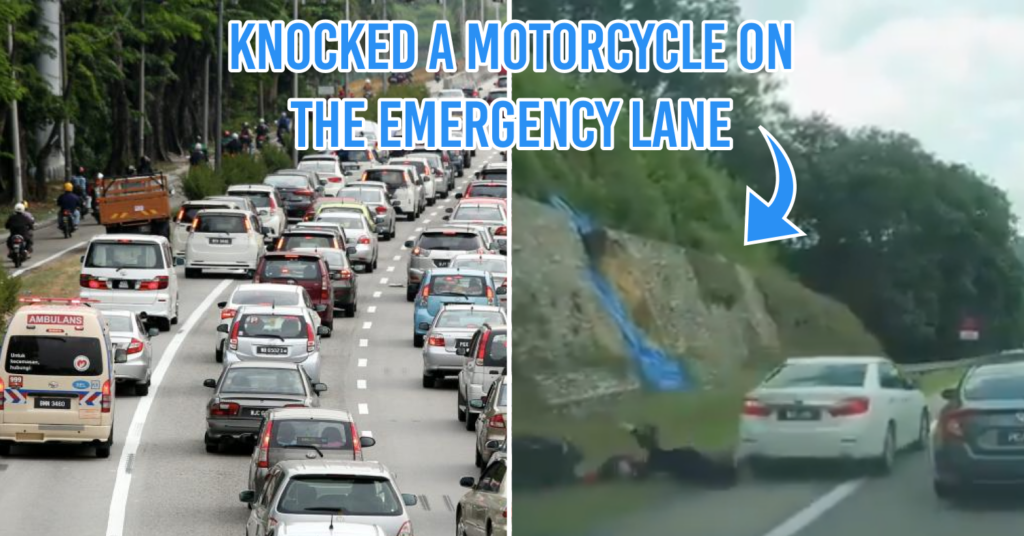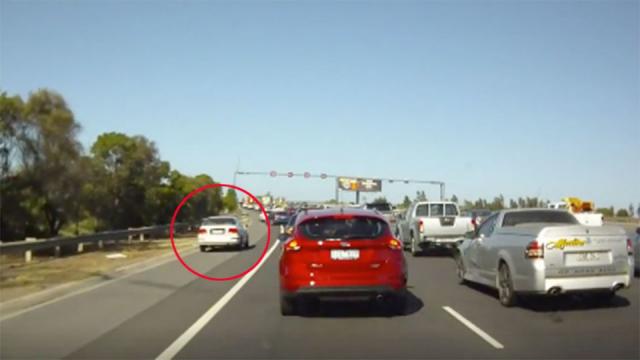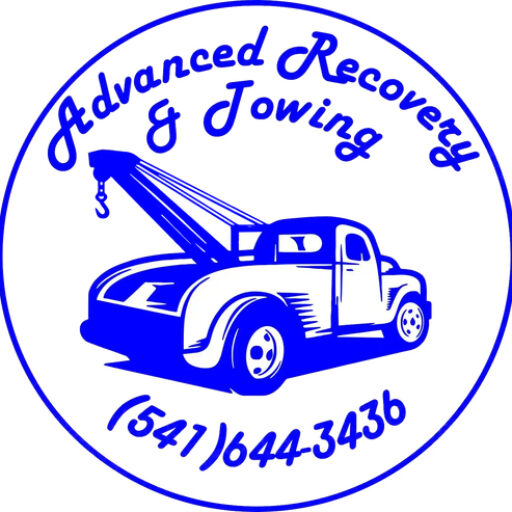Emergency Lane Usage
On any given day, Oregon’s highways are buzzing with activity. Yet amidst this rush, there’s a lifeline that often goes unnoticed—the emergency lane. This lane, often referred to as the shoulder, is not just a strip of asphalt; it’s a sanctuary for the stranded, a swift route for emergency vehicles, and a crucial element in managing emergency situations.
Key Takeaways
- Emergency lanes are vital for safety and efficiency.
- Proper usage of shoulders can save lives and reduce congestion.
- Emergency vehicles rely heavily on these lanes.
- Misuse of emergency lanes can lead to severe penalties.
- Understanding emergency lane protocols is essential for all drivers.

The Role of Emergency Lanes
What is an Emergency Lane?
The emergency lane, commonly known as the shoulder, is the strip of road bordering the main travel lanes. In Oregon, these lanes serve multiple purposes, from providing a safe space for broken-down vehicles to offering a critical route for emergency responders.
“The shoulder is not a travel lane but a lifesaver,” says every seasoned tow truck driver in Oregon.
Important Facts:
| Purpose | Description |
|---|---|
| Breakdowns | Safe space for vehicles experiencing mechanical issues. |
| Emergency Access | Allows ambulances, fire trucks, and police vehicles to bypass traffic. |
| Driver Rest Area | A temporary stop for drivers feeling unwell or needing a break. |
| Accident Avoidance | A place for quick maneuvers to avoid collisions. |
Emergency Situations: When Every Second Counts
Imagine you’re driving on I-5, and suddenly you see flashing lights behind you. An ambulance is desperately trying to get through traffic. Here, the emergency lane becomes a crucial passageway, turning a potential delay into a life-saving shortcut.
The Vital Role of Emergency Vehicles
Emergency vehicles—police cars, fire trucks, and ambulances—rely on the shoulder to navigate through congestion. This can mean the difference between life and death, especially in critical situations.
Scenario: During a severe car accident on Highway 26, a fire truck needs to reach the scene. Regular lanes are jammed. The fire truck uses the emergency lane, cutting response time in half and potentially saving lives.
Proper Usage of Emergency Lanes
Who Can Use the Emergency Lane?
In Oregon, the shoulder is primarily reserved for:
- Vehicles in distress: Cars that have broken down or have a flat tire.
- Emergency responders: Police, fire, and medical services.
- Authorized maintenance vehicles: Those conducting road repairs or inspections.
Misuse and Penalties
Using the emergency lane improperly can lead to hefty fines and legal consequences. It’s illegal to drive in the emergency lane unless in an actual emergency or directed by law enforcement.
Key Oregon Statutes:
| Violation | Penalty |
|---|---|
| Improper Use of Shoulder | Fine up to $500 and potential points on driving record. |
| Obstructing Emergency Vehicles | Significant fines and possible misdemeanor charges. |
| Unauthorized Stopping | Ticket and removal by towing services at the owner’s expense. |
For more information, check out the Oregon DMV Study Section.
Tow Truck Drivers: Unsung Heroes
Tow truck drivers in Oregon play a pivotal role in maintaining the flow of traffic and ensuring the safety of stranded motorists. They are often the first responders, clearing disabled vehicles from the shoulder and restoring normal traffic conditions.
Tow Truck Essentials:
| Equipment | Function |
|---|---|
| Winch and Hoist | For lifting and securing vehicles. |
| Emergency Lights | Ensuring visibility and warning other drivers. |
| Communication Devices | Keeping in touch with dispatch and emergency services. |
| Safety Gear | Personal protective equipment for working in high-traffic areas. |
How to React in Emergency Situations
If You Break Down
- Signal and Move to the Shoulder: Use your turn signals and carefully steer your vehicle onto the emergency lane.
- Turn on Hazard Lights: Make yourself visible to other drivers.
- Stay Inside Your Vehicle: It’s safer to remain inside unless there’s a compelling reason to exit.
- Call for Assistance: Contact roadside assistance or a towing service.
For a comprehensive guide, visit the Oregon DMV Study Section.
For Other Drivers
- Yield to Emergency Vehicles: Move to the right and allow them to pass using the shoulder if necessary.
- Do Not Use the Shoulder to Bypass Traffic: This is illegal and dangerous.
- Stay Alert: Be mindful of vehicles merging back into traffic from the shoulder.
Understanding the Risks
Misusing the emergency lane can cause accidents and hinder emergency responders. It’s crucial to respect the intended use of these lanes to ensure safety and efficiency on the road.

The Intersection of Law and Safety
Oregon’s laws are stringent when it comes to emergency lane usage. Understanding and abiding by these laws is not just a legal obligation but a moral one. Misuse can result in severe penalties, and more importantly, can jeopardize lives.
For detailed legal information, check out Oregon’s driving laws.
When to Use the Emergency Lane: Specific Scenarios
The emergency lane is a critical aspect of road safety, but knowing when and how to use it can be confusing. Here are specific scenarios where using the emergency lane is not only appropriate but necessary.
Medical Emergencies
Imagine you’re driving along the Oregon coast, and a passenger suddenly falls seriously ill. Pulling over into the emergency lane allows you to call 911 and await an ambulance without obstructing traffic. This ensures that the patient receives timely medical attention while keeping the road safe for others.
Mechanical Failures
A flat tire or engine trouble can strike at any moment. The emergency lane provides a safe haven to assess and address the issue without risking further damage or causing an accident. Always remember to turn on your hazard lights to alert other drivers.
Key Statistics:
| Incident Type | Percentage of Occurrences on Highways |
|---|---|
| Flat Tires | 40% |
| Engine Failures | 25% |
| Overheating | 15% |
| Other Issues | 20% |
Towing Services: The Backbone of Roadside Assistance
Oregon’s towing services are the unsung heroes when it comes to emergency lane efficiency. These professionals ensure that broken-down vehicles are swiftly and safely removed, maintaining traffic flow and safety.
Tools of the Trade:
| Tool | Description |
|---|---|
| Flatbed Trucks | For safely transporting incapacitated vehicles. |
| Dollies | To lift and move vehicles with locked wheels. |
| Jumper Cables | For assisting with dead batteries on the spot. |
| Fuel Delivery | Providing fuel to stranded motorists who have run out of gas. |
Emergency Lane Laws in Oregon
Understanding the legal framework surrounding emergency lane usage is essential for every driver. Oregon has clear guidelines and penalties for misuse to ensure these lanes remain effective and safe.
Specific Legal Provisions
Oregon law stipulates that the emergency lane is reserved for:
- Emergency vehicles: Ambulances, fire trucks, police cars.
- Disabled vehicles: Cars that cannot continue driving due to mechanical issues.
- Road maintenance vehicles: Authorized to perform essential maintenance tasks.
Violations of these laws can result in fines, points on your driving record, and even jail time in severe cases. For a detailed overview, refer to the Oregon DMV Study Section.
Frequently Asked Questions
What should I do if I see an emergency vehicle approaching?
Move to the right and stop if possible, allowing the emergency vehicle to pass using the emergency lane if necessary. Always remain alert and follow any directions given by emergency personnel.
Can I use the emergency lane to pass traffic?
No, using the emergency lane to bypass traffic is illegal and dangerous. This lane must remain clear for emergencies and authorized use only.
How do I signal for help if I break down in the emergency lane?
Turn on your hazard lights and, if safe, place reflective triangles or flares behind your vehicle. Stay inside your vehicle and call for roadside assistance or emergency services.
What are the penalties for misusing the emergency lane?
Penalties can include fines up to $500, points on your driving record, and potential misdemeanor charges for obstructing emergency vehicles.
How can towing services help in emergency lane situations?
Towing services can quickly and safely remove disabled vehicles from the emergency lane, reducing the risk of accidents and ensuring the lane is available for other emergencies.
The Importance of Driver Education
Driver education plays a crucial role in ensuring that all motorists understand the importance and proper use of the emergency lane. Programs and courses offered by the Oregon DMV are designed to equip drivers with the knowledge and skills needed to navigate these situations safely.
For comprehensive resources and study materials, visit the Oregon DMV’s official page.
Enhancing Road Safety Through Awareness
Raising awareness about the proper use of emergency lanes is essential for enhancing road safety. Public service announcements, educational campaigns, and community outreach programs can significantly reduce misuse and improve overall traffic management.
Community Initiatives:
| Initiative | Description |
|---|---|
| Driver Workshops | Hands-on training for proper emergency lane usage. |
| Public Service Campaigns | Informative ads and messages about the importance of emergency lanes. |
| School Programs | Educating young drivers on road safety and emergency protocols. |
Real-life Stories: Lessons from the Road
The Overlooked Lifesaver
One summer evening, Jane was driving home from work when her car suddenly lost power. She managed to steer it onto the emergency lane and called for a tow truck. Within minutes, a tow truck arrived, and Jane was safely on her way. This experience taught her the true value of the emergency lane and the importance of using it correctly.
A Tow Truck Driver’s Perspective
Mark, a tow truck driver with over 20 years of experience, shares his insights: “I’ve seen it all—from minor breakdowns to major accidents. The emergency lane is a lifeline, and it’s crucial that drivers respect its purpose. Misuse can cost lives.”
Conclusion
Understanding the proper use of emergency lanes is not just a legal requirement; it’s a moral duty. It ensures that help can reach those in need swiftly and safely, that broken-down vehicles don’t become hazards, and that Oregon’s roads remain safe for everyone.
